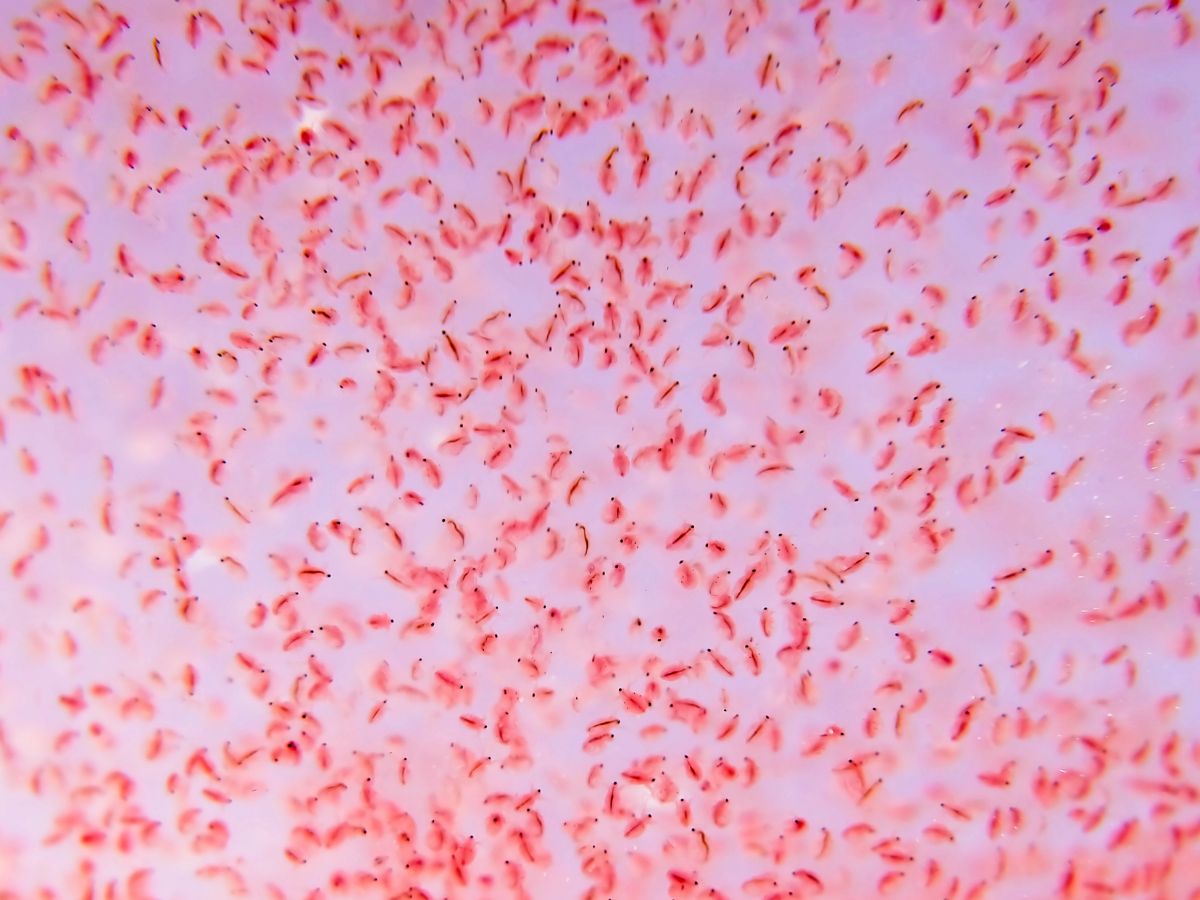Daphnia, also known as water fleas, are an ideal food for newly hatched and young Axolotl, as they only eat live food. If you don’t want to buy new daphnia regularly, you can easily raise them at home.
What are water fleas?
Daphnia, also called water fleas, are crustaceans that grow from 0,01 to 0,24 inches(2 to 5 mm) in size, depending on the species. They are easy to breed and have a high fiber content. Due to their movement, they also trigger the hunting instinct in young axolotls.
Advantages of water fleas are:
- easy to breed
- ideal food for baby axolotls
- rich in fiber
Daphnia can also be found in your local ponds and lakes, but they shouldn’t be used for feeding your axolotl, otherwise you can quickly get parasites in your tank. Daphnia feed on organic small, suspended particles, as well as bacteria and unicellular algae.
What do you need for raising daphnia?
Equipment needed:
- small aquarium* or large bucket*
- airstone* or air pump*
- food for the daphnia, e.g. spirulina powder* or yeast
- Daphnia*
As a container for your new daphnia you need either a small aquarium or a bucket that holds 2 to 16 gallons (10 to 60 liters) of water. The airstone provides sufficient water movement and oxygen.
How to breed Daphnia?
At the first step you fill your aquarium or bucket with water, though not with fresh tap water, but in the best case with aquarium water or tap water that has already been stagnant for 2 days. To make sure that there is enough oxygen and movement in the water, connect the airstone or the air pump.
Afterwards you can add your first water fleas, a minimum quantity of approx. 100 animals is a reasonable start.
You can feed your daphnia with spirulina powder or yeast. Using spirulina powder is the safest option, as you can hardly overfeed the daphnia and you don’t risk overloading the water.
Add enough spirulina powder to the water that it becomes slightly cloudy and when the coloration has subsided, you can add more the next day.
If you feed your daphnia with yeast, a pea-sized amount of yeast is enough for a 15 gallons (60 liter) tank, it should be mixed with a little water beforehand so that it is well distributed in the water. The more you feed your daphnia, the more they will reproduce.
Daphnia food:
- Spirulina powder*
- Dry or fresh yeast
- Live microalgae
The water itself must be changed only rarely and breeding daphnia is generally very undemanding.
If you don’t want to buy the equipment separately, you can also buy complete daphnia breeding kits.
Daphnia can also be bred outside in the garden, you can put the aquarium or the bucket outside or use a larger container like a rainwater tank. Daphnia reproduce best at a temperature range of 59 to 77 °F (15 to 25 °C).

How do you feed the daphnia?
If your water daphnia is going well, you can harvest fresh daphnia for your axolotl about every 5 days.
To catch your daphnia, you can either skim them off with the water and add them to your axolotl, but it is easier if you catch some water fleas with a very fine sieve, such as an artemia sieve*, and add them to your axolotl tank.
There is also an article about a complete feeding guide for axolotls in every stage of life here.
Conclusion
Daphnia are a very good choice as live food especially for young axolotls and are easy to breed at home. This way you always have fresh daphnia on hand and don’t have to buy new ones regularly.
Another live food option for young axolotls is Artemia, for larger axolotls earthworms. These can also be easily bred at home, click here for an article on breeding artemia and here for breeding earthworm.

